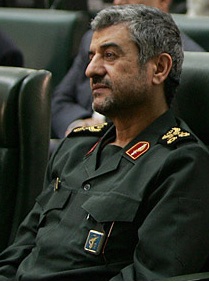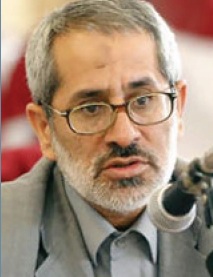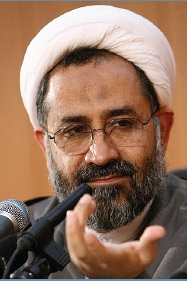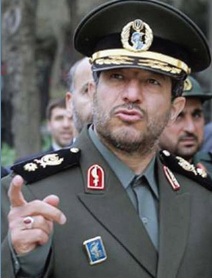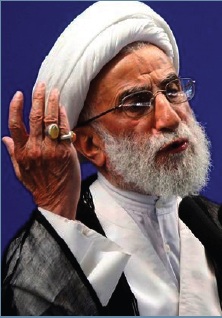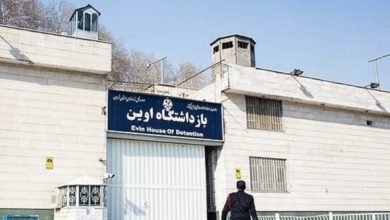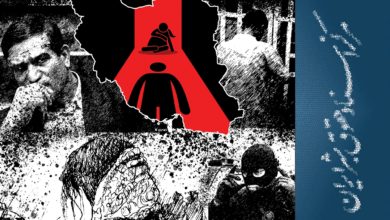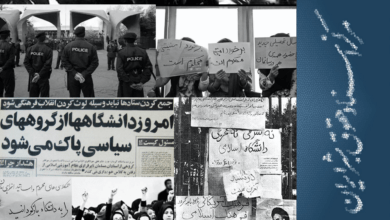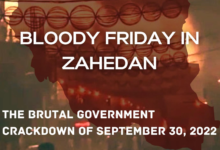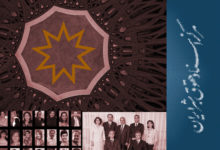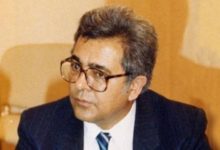In commemoration of the one year anniversary of the ongoing human rights crisis in Iran, IHRDC issues this short report on the suppression of dissent in the days, weeks and months following the election, including short biographies of eighteen Iranian leaders responsible for the suppression of dissent in violation of Iranian and international law.
Contents
Preface
Last July, on the symbolically important 40th day of mourning for the murdered Neda Agha-Soltan, Maryam Sabri was arrested in Tehran. The 21-year-old girl had been chanting slogans with other peaceful protestors when she and her friends were attacked by dozens of plainclothes Revolutionary Guardsmen and Basij irregulars.
Maryam, an employee at a boating company, was blindfolded, handcuffed and taken by van with five or six others to an unknown detention center. There, she was left by herself in a dark closet-like cell, where she had just enough room to sit with her legs stretched out.
Maryam was periodically interrogated and beaten by ski-mask-wearing guards. The first three times she was interrogated, she faced cursing and beatings, but she refused to cooperate fully with the interrogators.
During the fourth interrogation session, Maryam was raped.
She was raped again during the next session, but by a different interrogator. The third time she was raped, she refused to scream or beg.
The fourth time Maryam was raped, her interrogator took off her blindfold so she could see his face.
On August 14, more than two weeks after her abduction, Maryam’s captors dropped her off around dusk near a park. She was instructed to infiltrate and inform on other demonstrators, and later received threatening phone calls urging her to cooperate. Unwilling to endure any more trauma at the hands of her own government, she fled over the border to Turkey.
Maryam’s experience is one of dozens recounted in Iran Human Rights documentation Center’s report on the Iranian regime’s human rights violations following the June 12, 2009 presidential election. The report, “Violent Aftermath: The 2009 Election and Suppression of Dissent in Iran,” was published in February. However, even now, a year after the disputed election, the Islamic Republic’s suppression of dissent continues unabated.
The fundamental human rights of Iranians – to freedoms of expression and association, and to be free from arbitrary arrest and detention as well as torture – continue to be violated with impunity. At least 10 Iranians have been executed for political reasons, countless remain in prison, and hundreds have been forced to flee the country out of fear for their lives and/or indefinite detention, interrogation and torture.
The responsibility for this brutal crackdown begins at the top of the Iranian regime and flows down through the ranks of the police, the Revolutionary Guards, the Basij, the prison system and the Judiciary. While it is impossible at this point to identify all those responsible, the list includes the following leaders:
Ayatollah Sayyid Ali Hosseini Khamenei
Ayatollah Sadeq Ardeshir Larijani
Hojjatoleslam Qolam-Hossein Mohseni-Ejei
In commemoration of the one year anniversary of this ongoing human rights crisis, IHRDC issues this short report on the suppression of dissent in the days, weeks and months following the election, including short biographies of eighteen Iranian leaders responsible for the suppression of dissent in violation of Iranian and international law.
One year ago, on June 13, 2009, demonstrations erupted in cities across the Islamic Republic of Iran. Demonstrators protested what they viewed as widespread fraud in the presidential election held the previous day. Calls of “Where is my vote?” predominated.
The Guardian Council had permitted only four men to campaign: Mahmoud Ahmadinejad, the incumbent; Mohsen Rezai, a former head of the Islamic Revolutionary Guard Corps (Sepah), considered a conservative; Mir-Hossein Mousavi, a former prime minister of Iran during the war with Iraq, considered a reformist; and Mehdi Karroubi, a reformist former speaker of the Majlis, the Iranian parliament.
Mousavi declared himself the winner late on Election Day. Iran’s Election Commission Chief, Kamran Daneshjoo, immediately announced that Ahmadinejad had won 62% of the vote. The regime also responded by cutting off electronic communication avenues within Iran and with the outside world. As the week progressed, cell phone and internet services were regularly shut down and slowed. On June 16, the authorities announced that foreign journalists were forbidden from reporting from the streets, and that their visas would not be renewed. Hundreds of domestic journalists and members of the press were arrested and intimidated.
Despite these efforts at shutting down communication, demonstrations continued throughout the country on an almost daily basis through June. In response, the government confirmed that Ahmadinejad had won and unleashed the Sepah and the Basij upon the crowds. As the crowds became larger and persisted in exercising their right to peaceful assembly, the security forces became increasingly violent. Demonstrators were attacked, beaten and shot in the streets. Many were killed. Thousands were arbitrarily arrested — the Judiciary reported that 4,000 people were arrested in the initial weeks.
Throughout the summer and continuing into the winter, demonstrators flooded the streets on remembrance days, and the security forces continued to brutally suppress all expressions of dissent. Objection to an allegedly fraudulent election gradually developed into broader expressions of dissatisfaction with the government. Over the course of a few months, the protests became less focused on the election and more on the general repressive nature of the regime.
In the months after the election, the Iranian regime also arrested people who were not demonstrating but whom the government charged with fomenting a “velvet revolution.” The exact number of arrests remains unknown, but circumstantial evidence indicates that hundreds were arrested and detained merely for exercising their rights of speech and association. The arrests captured broad segments of civil society, including leaders and members of political opposition and minority groups, members of the political establishment, lawyers, students and academics. The arrests continue.
Many arrestees were threatened but released after a few days. However, many others faced torture, rape and even death while in custody. Detainees were, and continue to be, subject to solitary confinement, lengthy interrogations, beatings, rape and other forms of torture. Many were not permitted contact with their families or lawyers, and many were coerced into providing public confessions.
Suppression of Demonstrations
An estimated 10,000 protesters thronged the streets of Tehran on June 13. The rallies attracted men and women of all ages, from a variety of socioeconomic backgrounds, calling for nullification or a recount. The protests in Tehran reportedly began in Vanak Square, but groups of demonstrators took different routes through the city. Demonstrators chanted “death to the dictator,” “death to the coup d’état,” called for a new election, and demanded that Ahmadinejad resign.
Many demonstrators took to the streets to defend their votes. The precarious state of the economy, the high voter turnout, and suspicions of fraud made Ahmadinejad’s win—and especially his margin of victory— very suspect.
Both Mousavi and Karroubi published statements demanding nullification of the election, and urged the population to remain calm. They did not attend the demonstrations on June 13. The Interior Minister, Sadeq Mahsouli, announced that the spontaneous demonstrations were illegal, thereby justifying the arrest and prosecution of protestors.
The Iranian authorities responded by sending in Basij and other security forces to break up the demonstrations. By nightfall, protestors had set fire to trash cans, motorcycles and even buses while members of the Basij attacked the crowds with belts, batons, cables and rubber hoses. Clad in black body armor and riding motorcycles, the Basij randomly damaged private property and stole from demonstrators. There are reports that they confiscated cell phones and photographic equipment, and at least one Basij stole sunglasses from demonstrators.
On the night of June 13, people began shouting “God is great” from their rooftops at night, a strategy used during the 1979 revolution against the Shah.
The demonstrations continued into June 14 in many of Iran’s larger cities. The stepped-up security during the day on June 14 substantially reduced the number of protestors on the streets. However, by nightfall people converged on Vanak Square in Tehran and again faced Basij that inflicted bloody wounds and whipped protestors with chains. Security forces chased protestors into homes and followed student demonstrators into the university dormitories.
Many students were beaten and arrested outside of the main gate to the University of Tehran. Those in the dorms believed that the university campus provided a sanctuary because after a violent crackdown on student riots in 1999, Iran’s Supreme National Security Council had decreed that security forces were only allowed to enter campus after receiving permission from the university’s board of trustees and dean.
On the night of June 14, security forces broke open gates and doors on the campus. Witnesses describe vicious attacks by forces in riot gear who did not distinguish between students who had protested and those who had not.
By the early morning of June 15, the authorities had arrested over 100 students under a cloud of tear gas while beating and shooting them with pellet guns. A video reportedly taken by Iranian police and released by the BBC in February 2010 supports these claims. The assailants were equipped with riot gear, including shields and batons, and witnesses identified them as members of the Basij. Fatemeh Barati, Mobina Ehterami, Mohsen Imani, Kasra Sharafi and Kambiz Sho’a’i were reportedly beaten to death with batons and electric shock prods. Their names were confirmed by Tahkim-e Vahdat, a politically active student and alumni organization. Members of the organization were arrested before and after the election.
In addition, Iman Namazi was shot that night during the raid on the dormitories in Tehran. Some bodies of students who had been killed were reportedly buried by the night of June 15 without notification to their families. Most of those students are thought to have died very early on the morning of June 15. When families inquired as to the whereabouts of their loved ones’ remains, the police and other institutions harassed and threatened them. Twenty days later, five students were still in the hospital.
Gunshots were heard in several other parts of Tehran as well. One witness recounted how security forces riding motorcycles fired on demonstrators with high-caliber weapons: “It wasn’t like the films where there is just a small hole—the shooting was blowing off hands, limbs. It was terrible, terrible.”
Attacks on universities were also reported from around the country. There were reports of security forces and conservative militias, including the Basij and Ansar–i Hizbollah, storming universities and dorms, and beating and arresting students in Shiraz, Isfahan, Tabriz, Babol, Mashhad and Zahedan. Security forces stormed a library in Shiraz University, firing tear gas and beating students. A hundred students were arrested and a staff member was assaulted. Tahkim-e Vahdat reported the deaths of two students in Shiraz. The attack in Shiraz was so vicious that the next day the chancellor of the university, Mohammad Hadi Sadeqi, resigned in protest. Killings at universities in Isfahan were also reported but remain unconfirmed.
The similarity of the attacks on the universities and their proximity in time appears to indicate that they were planned and coordinated at a high level.
Mousavi and Karroubi applied for a permit for a rally at Azadi Square on June 15, and asked people to stay calm. Their application was denied and the rally was officially canceled, but as the day progressed, significant numbers of demonstrators filled the streets of Tehran and other larger Iranian cities. In Tehran, protestors marched silently from Enqelab Square (Revolution Square) to Azadi Square (Freedom Square), where an estimated hundreds of thousands, and perhaps millions, of protestors demanded nullification of the election and a recount.
Mousavi and Karroubi joined the demonstrators at Azadi Square. Mousavi, in his first public appearance since the election, gave a speech demanding respect for the people’s votes.
During most of the day, the response of the security forces to the large number of street protestors appeared to have been generally mild. In spite of an official ban on demonstrations, security forces were ordered to observe the events and not attack demonstrators.
Protests were met with much greater resistance in other cities. In Ahvaz, a crowd of 2,000 demonstrators was attacked by baton-wielding police officers. In Shiraz, security forces fired into the air and Fars Province Police General Ali Moayeri authorized his officers to shoot at protestors and warned: “From now on, we will respond harshly.”
Violence also broke out in Tehran as the sun began to set and the crowds thinned. The Sepah and the Basij clashed with young demonstrators who refused to disperse. Witnesses report that the Basij forces tried to provoke demonstrators, sometimes successfully, into taking violent action.
In one of the most publicized clashes, a security officer opened fire on a crowd of demonstrators outside the Basij compound near Azadi Square. Video footage shows young men throwing rocks and a fire set by protestors. However, the chaos and fear experienced by the demonstrators is palpable in the several available videos of the incident. There is no evidence of systematic or coordinated action on the part of the demonstrators, and, although some demonstrators are holding rocks, none are armed. Whether this incident sparked the violence that night, or was simply one of the earliest and best documented, remains unclear. It is clear, however, that shooting into crowds was considered acceptable by the security forces from the night of June 15 onward.
At least eight people were killed in demonstrations in Tehran on June 15. Some were shot in streets close to Azadi Square. Others died from head injuries suffered from beatings by baton-wielding security forces.
Basij were captured on video shooting into the crowds on the night of June 15. Naser Amirnejad was one of the protestors shot by the Basij. Close by, Mehdi Karami and Massoud Khosravi were also shot to death. Davoud Sadri was shot outside the Meqdad Basij station near Azadi Square. The 25-year-old electrician was transferred to Rasoul Akram hospital, but died that day from injuries to his heart and spleen. His death was not confirmed for weeks, during which time his family was given conflicting information from authorities about how he died, who was responsible, and where his body was located.
Kianoosh Asa, a master’s student in petroleum chemistry at the Iran University of Science and Technology, is believed to have been shot on June 15. He disappeared that day and his whereabouts remained unknown until June 24, when his family found his body at the medical examiner’s morgue. Months later, on National Student Day (December 7), Asa’s brother, Kamran, was arrested as he tried to place a wreath and his brother’s picture on the university grounds where he had studied. He was released two months later but again arrested on May 31, 2010. He is currently being held at an undisclosed location.
Confirmed deaths were also reported in Isfahan, Mashhad and Kermanshah. Near Shiraz Gate in Isfahan, Hossein Akhtarzand suffered a terrible death at the hands of plainclothes security agents who chased him and other protestors into a building complex filled with doctors’ offices. Akhtarzand climbed to the third floor, where he was beaten. Eyewitnesses report that he was thrown from the third floor rooftop. Reportedly, when representatives of the Intelligence Ministry delivered his body to his family, they claimed that he had slipped and fallen during the arrest.
On June 16, the Guardian Council announced that the vote would be partially recounted. Mousavi urged restraint in light of threats by the country’s police chief, General Esmail Ahmadi-Moqaddam, to “quell any unrest.” Yet the demonstrations continued throughout the week.
On June 17, thousands of demonstrators packed the streets of Tehran for a fifth straight day. The next day, demonstrators gathered in Imam Khomeini Square in Tehran in the late afternoon. Their numbers reached into the hundreds of thousands, and covered the whole square and the surrounding streets. Dressed in green or black, bearing black candles or black ribbons, demonstrators heeded the call of mourning for the dead, but anticipated further clashes with the authorities.
Anticipating both the impact of the upcoming Friday Prayer and an extraordinary session called by the Guardian Council for June 20 to consider allegations of vote rigging, the Association of Combatant Clerics asked for a permit to hold a pro-Mousavi rally on June 20. Karroubi’s party, Etemad Melli, made a similar request that day even though the editor of its news outlet, Mohammad Qoochani, had been arrested by Intelligence Ministry agents.
On June 19, Morteza Tamaddon, Tehran’s governor general, made it clear that no permission for opposition rallies would be granted. In a sign of disrespect, neither Mousavi nor Karroubi attended the Friday Prayer sermon by the Supreme Leader on June 19, or sent representatives to the Guardian Council’s session on June 20. Khamenei’s Friday Prayer sermon, delivered to tens of thousands of conservative supporters, was a hardline message that was well received by the crowd but stunned much of the Iranian population. Receiving what amounted to a green light from the Supreme Leader, security forces unleashed ferocious assaults on the demonstrating public the following day.
Thousands of protestors refused to remain home, and attended rallies in Tehran and around the country on June 20. In Tehran, demonstrators tried to congregate in Enqelab Square and Azadi Square, but thousands of police, Basij, militia and plainclothed officers blocked access to the squares and to the streets leading to the squares.
About 3,000 protestors managed to gather inside Enqelab Square where they chanted “Death to the Dictator” and “Death to dictatorship.” Outside, the Basij purposefully limited the flow of people and were seen creating chaos.
Secret police and plainclothes agents slashed people in the crowd with knives and razors. Over 20 people were fatally shot in Tehran, including bystanders who were shot by security forces opening fire on the demonstrators. Video footage shows militia members firing from rooftops and windows into crowds of protestors chanting “Allahu akbar” (“God is great”) and “Do not fear. Do not fear. We are all together here.”
Twenty-year-old Ashkan Sohrabi was shot three times in the chest. Kaveh Alipour was killed while reportedly walking home from acting class on Saturday. Standing at an intersection in downtown Tehran, the 19-year-old was shot in the head. He was reportedly alone. Masoud Hashemzadeh was shot in the chest; the bullet punctured his heart and lung before exiting out of his back. He suffered extensive internal bleeding and general blood loss.
Some of the most disturbing and dramatic video footage captured the death of Neda Agha-Soltan, who was shot in the chest on a side-street in Tehran. Agha-Soltan became an international symbol of the brutality of the Iranian regime. Video of her death was seen by millions on the Internet. As a result of the attention her murder received, her family suffered at the hands of the authorities, who attempted to deny the veracity of the facts surrounding Agha-Soltan’s death.
By the end of Saturday, June 20, the streets leading to Enqelab Square in Tehran were covered in blood and rocks thrown by protestors. State media initially glossed over the level of violence, reporting that police used batons and water canons to disperse protestors. Later, it acknowledged that a number of people had been killed, but blamed “terrorist elements who had infiltrated the rallies.”
Many protestors who witnessed the brutality on June 20 believed that the demonstrations were over and would not be revived. Indeed, for the next week, the streets remained mostly calm. There was a suffocating security presence. Throughout the rest of the summer and into the winter, demonstrations became more sporadic. They occurred mostly on religious days of mourning for the victims of the violence or on official national days of significance.
July 9 was the 10th anniversary of the 1999 attack on Tehran University’s dormitory by the Basij. Although warned by Ahmadi-Moqaddam, the chief of police, that any gathering would be strongly confronted, a few hundred people assembled and protested. Protestors once again resisted the authorities’ dispersal efforts by chanting and throwing rocks. Access to important sites was blocked, and protestors clashed with riot police who worked to prevent them from assembling and dispersed those who managed to congregate.
Authorities severely beat demonstrators with batons and used electric shock prods before arresting them. A subsequent military investigation revealed that more than 45 of these and other demonstrators were taken to the Kahrizak detention facility the next day. The beatings suffered on the streets and the conditions at Kahrizak led to the deaths of at least three of the demonstrators arrested on July 9. Yet on July 10, in one of his first statements regarding the victims of the July 9 demonstrations, Ahmadi-Moqaddam claimed that NAJA (the national police force) no longer held anyone in custody in relation to the street protests.
A week later, on July 17, former president Ayatollah Akbar Hashemi-Rafsanjani, a senior cleric and regular leader of Tehran’s Friday Prayer, gave his only post-election sermon. Rafsanjani’s sermon drew hundreds of thousands of attendees. Emphasizing unity, he urged the authorities to refrain from arresting and imprisoning citizens and from censoring the media.
Although both Mousavi and Karroubi attended Rafsanjani’s sermon, Tehran University’s Prayer Hall, the setting of all Friday Prayers, was filled with supporters of the government. Outside, however, a multitude of demonstrators used the opportunity to continue their protests. Clashes erupted after the sermon, and the security forces used tear gas and beatings to disperse crowds as they gathered in several areas in Tehran. Once again, the authorities declared all assemblies except those sponsored by the government to be illegal, and protestors were arrested for allegedly staging illegal demonstrations and starting riots.
Outbursts of protests and violence continued through July. July 30 marked the last significant day of mourning for Neda Agha-Soltan and others who had died on June 20. Mousavi and Karroubi requested a permit to hold a memorial service at the Mossallah Mosque in Tehran. Their joint letter noted that no speeches would be made and that participants would be required to mourn in silence. The Interior Ministry denied their request.
Thus, the thousands of mourners who attended the memorial service were deemed guilty of illegal demonstrations and subject to attacks by security forces. These forces cordoned off Agha-Soltan’s grave and limited access to the cemetery. While Karroubi managed to attend the ceremony, Mousavi was prevented from exiting his vehicle when he arrived to pay his respects. Riot police used tear gas, beat demonstrators, broke windshields of passing cars and dispersed the crowds. Some people were injured after falling in freshly dug graves. Official sources put the overall number of those arrested at 50.
Fearing that demonstrators would co-opt national events and celebrations, the government cancelled several such events in the following weeks. For example, in early September, it cancelled the religious ceremony of Ehya at the Imam Khomeini Shrine. So, too, was the anniversary of the remembrance of Ayatollah Taleghani’s death, and later the Eid-e Fetr prayer at the Mossallah Mosque and the anniversary of Ayatollah Ashrafi Isfahani’s martyrdom.
However, on September 18, the government proceeded with public observance of International al Quds Day. This annual event is a government-sponsored expression of solidarity with the Palestinian people and a protest against Israeli occupation of Jerusalem (al Quds in Arabic) that was mandated by the Islamic Republic’s founding leader, Grand Ayatollah Ruhollah Mousavi Khomeini.
No permit was requested by any of the reformist candidates or parties. However, tens of thousands of opposition demonstrators used the government-sponsored demonstrations to express their continued displeasure with the regime. Although they were reportedly a minority in comparison to the hundreds of thousands of demonstrators rallied by the government to attend the traditional protest, chants of “Death to the Dictator” were heard.
Before the demonstrations, the opposition was warned by both the Supreme Leader and the Sepah that any division or deviation from the official purpose of the demonstrations would be met with force. Security forces armed with tear gas and batons clashed with demonstrators in Tehran as well as in other cities including Shiraz and Rasht. In Tehran, hardliners attacked Mousavi’s vehicle and managed to shove and harass former president Mohammad Khatami before supporters surrounded him. Yet the next day, the police announced that only demonstrators who were attempting to cause damage to public property were arrested and that police did not engage the opposition protestors.
Smaller demonstrations continued through the end of September as students returned to the universities. Again, authorities responded by arresting student leaders of Tahkim-e Vahdat. However, the opposition set November 4 (the 13th of Aban in the Persian calendar) as the next major planned demonstration. This date has traditionally been used by the Islamic Republic to mark the 1979 student takeover of the American embassy in Tehran.
On October 16, nearly three weeks before the demonstration, the head of the Guardian Council, Ayatollah Ahmad Jannati, warned opposition protesters not to attempt to hijack another event. Jannati, a longtime supporter of Ahmadinejad, issued his warning during his nationally televised Friday Prayer sermon. He also encouraged security forces to show no mercy when dealing with arrested protestors.
His warnings were echoed by the police, the Basij and the Judiciary. Brigadier General Ahmad-Reza Radan, the deputy chief of police, stressed that it was the duty of the police to “prevent any disturbance of order in society.” In its announcement setting the location for the anti-American rally, the police emphasized that any other demonstration was illegal. Mohammad Reza Naqdi, the head of the Basij, also emphasized the crucial role of his forces in protecting the revolution and the Velayat-e Faqih (Guardianship of the Jurisprudent). Tehran’s newly-appointed Prosecutor-General, Abbas Jafari-Dolatabadi, promised that “those who try to disrupt the anti-American rallies on Wednesday will be confronted.”
On November 4, thousands of opposition protestors unsuccessfully attempted to assemble in Tehran and join the demonstrators bused in by the government to demonstrate in front of the former American embassy building. The security forces did not allow opposition demonstrations anywhere in Tehran. Nevertheless, hundreds of protestors gathered in streets and alleys, and chanted anti-government slogans. They were dispersed by security forces shooting tear gas and wielding batons. Some demonstrators ran into buildings to escape the attacks, but security forces often stormed after them. The security forces arrested many people.
Karroubi was reportedly attacked by government forces after he exited his car because of a traffic tie-up. His entourage was stormed by plainclothes and NAJA officers, and one of his bodyguards was hit by a tear gas canister that split his head open and sent him to the hospital. Forces attacked and damaged Karroubi’s car as he drove to safety. Mousavi was not even allowed to leave his offices at the Cultural Center. His offices were surrounded by plainclothes forces on motorcycles, whom he reportedly confronted.
Security forces arrested dozens of demonstrators and activists. The next day, families of these individuals gathered outside of the Vozara detention center for news about the detained. They, too, were beaten and dispersed.
On December 5, in a preemptive strike, security forces dispersed and arrested 10 members of the Mourning Mothers, a group formed after the death of Neda Agha-Soltan that held protest gatherings on Saturdays at Laleh Park in central Tehran. They protested the arrests and detentions of their children.
December 7, National Student Day, presented opposition demonstrators with another opportunity to stage demonstrations. In the weeks preceding December 7, the government intensified its efforts to arrest student leaders. Tahkim-e Vahdat issued statements protesting the arrests of most of its leadership and noted that civil society groups were not allowed to hold even the smallest meetings. Authorities arrested or summoned several members of the central council of Tahkim-e Vahdat, including Milad Asadi, Bahareh Hedayat, Mehdi Arabshahi and Farid Hashemi, just a week before Student Day.
On Student Day, campuses in Tehran, Kerman, Mashhad, Isfahan, Hamadan and Sanandaj were the scenes of large demonstrations. The security forces, generally prohibited from entering campuses, sealed the universities in an effort to prevent demonstrations from spilling into the streets. Still, in several squares around Tehran and in the streets of Shiraz, protestors could not be contained and clashes with security forces were as violent as those immediately following the election.
University students affiliated with the Basij confronted and arrested other students on campuses. They reportedly threw two opposition members from a balcony in Hamedan. In Tehran, they arrested student activist Majid Tavakoli after he spoke at Tehran Polytechnic. The police reported the arrest of over 200 protestors, including 39 women, who were detained for resisting security forces and chanting slogans.
State television showed images of unknown individuals tearing up a picture of Ayatollah Khomeini. This prompted Mousavi and Karroubi, both of whom claim to represent the real ideals of the revolution and of Khomeini, to ask for permits to hold rallies for the first time in months. These rallies were meant to protest the actions of those who tore the picture of the founder of the Islamic Republic. The requests were denied.
On December 20, Grand Ayatollah Hossein-Ali Montazeri died in his sleep at his home in the holy city of Qom. Esteemed in Shi’a clerical circles, Montazeri was one of the founders of the Islamic Republic but later became its most vocal clerical critic. He was considered the spiritual guide of the opposition movement in Iran. His death and funeral resulted in massive processions in Qom, and demonstrations in Tehran, Isfahan and Najafabad, his city of birth.
Montazeri was laid to rest the day after his death, and thousands of people traveled to Qom for the funeral procession. Some were stopped en route and arrested. Photos show at least tens of thousands of mourners flooding Qom, the conservative city where most Shi’a clergy are educated. Basij laid siege to Montazeri’s house, and committed other acts considered insulting by the mourners. The provocations resulted in opposition chants and clashes with the Basij, which were reportedly mediated by the police in Qom.
On December 23, the former Friday Prayer imam of Isfahan, Ayatollah Seyyed Jalaleddin Taheri, organized a ceremony at the Seyyed Mosque marking the third day of mourning for Montazeri. The ceremony began at 9 a.m., but after a few minutes during which attendants read the Quran, plainclothes forces closed the doors of the mosque. They deployed tear gas and pepper spray, and aggressively beat the assembled congregants. The lecturing cleric, several journalists and 50 others were beaten and arrested. Taheri was prevented from attending the ceremony. His supporters held at bay several plainclothes men who surrounded his house but his son, Mohammad Taheri, was arrested five days later.
Montazeri’s seventh day of mourning, another traditionally important day in the 40-day mourning period, fell on December 27, which was also the date on which Ashura, perhaps the most important religious day for Iranian Shi’as, was observed. The 10th day in the Islamic month of Moharram, Ashura marks the death of Imam Hossein, who was killed in his struggle against the tyrannical Caliph Yazid. Each year, Iranians commemorate the death of Hossein with street processions, self-flagellation and passion plays known as “Ta’ziyih” in which Imam Hossein, dressed in green, is martyred.
The convergence of these symbolic events and the continued suppression of dissent resulted in what became the most significant and violent demonstrations since June. Although combatants traditionally set aside hostilities during the Islamic month of Moharram and especially so on Ashura, the regime continued to violently confront demonstrators in the streets and used lethal force to deal with the massive crowds.
On Tasu’a, the day before Ashura, about 50 members of the Basij and/or other vigilantes group entered Jamaran Mosque in Tehran and interrupted a sermon by Khatami about Ashura. The violence continued on Ashura as hundreds of thousands flooded the streets in cities throughout Iran. Protests and clashes occurred in Mashhad, Tabriz, Arak, Babol, Najafabad, Isfahan, Shiraz, Ardebil and Orumieh.
Video footage from Tehran and other cities show demonstrators clashing violently with security forces. They capture scenes showing demonstrators resisting arrest, being beaten by Basij and riot police, and being shot and run over by security forces.
Hundreds were arrested around the nation. In Isfahan, during a clash at Hossein Abad Street, over 400 demonstrators were arrested and transferred to Isfahan prison. In Tehran, 1,100 people were reportedly arrested and transferred by bus to Evin prison and other detention centers. In Najafabad, officials reportedly declared martial law.
Ali Habibi-Mousavi, Mir-Hossein Mousavi’s nephew, was shot that day in Tehran by a .45 caliber bullet that entered his chest and exited his body. Reports indicate that his killing was targeted and that the 43-year-old father of two was not participating in the demonstrations. His body and those of four others who died on Ashura were taken by security forces for autopsy. State media suggested a variety of different theories regarding the “mysterious” murder. Hossein Shariatmadari, editor in chief of the hardline Kayhan newspaper, accused Mir-Hossein Mousavi of having assassinated his own nephew.
Images of deaths and severe injuries were captured on cell phones and quickly spread over the Internet. One video that received substantial attention shows a police vehicle running over protestors. Witnesses who saw law enforcement trucks run over protestors have reportedly been arrested. Esmail Ahmadi-Moqaddam, the National Chief of Police, claimed that the truck that ran over civilians had been stolen from NAJA, and that the thief was being pursued. The families of those arrested have been pressured not to speak of the reasons for the arrests.
The number of victims on Ashura is difficult to establish. The official Islamic Republic News Agency announced that 37 people were killed that day. Four deaths were reported in Tabriz, and by the end of the day in Tehran, five deaths were confirmed by the opposition, including that of Mousavi’s nephew.
Ahmad-Reza Radan, the Deputy Chief of the National Police, claimed that the police and security forces did not use lethal force on Ashura. However, state television initially claimed that 10 members of anti-revolutionary terrorist groups were killed and that these groups also killed five others. The police then claimed eight deaths in Tehran, and then changed that number to seven after determining that one victim was allegedly a drug addict with no link to the demonstrations. Jafari-Dolatabadi, Tehran’s prosecutor general, confirmed the seven deaths and claimed to have launched investigations.
The bodies of those who died were returned to their families for burial under the condition that they not publicize the death or the cause of death. Family members of the victims were reportedly pressured to declare that the deaths of their loved ones were accidents.
As was the case in earlier demonstrations, authorities insisted that foreigners and terrorists were to blame. Minister of Intelligence Heydar Moslehi blamed foreigners for backing the chaos during Ashura and claimed that some of them had been arrested. Qolam Hossein Mohseni Ejei, the prosecutor general of Iran, stated that three of those arrested on Ashura would be tried for muharibih (waging war against God) and executed promptly.
Arrests and Detentions
Many demonstrators who were arrested in the summer of 2009 were taken to Kahrizak Detention Center. Located in southeastern Tehran, Kahrizak was designed to house “thugs and criminals.” The facility was cited as sub-standard in 2007 by inspectors but Kahrizak was only shut down after detainees arrested during the July 9 demonstrations died.
Accounts from survivors detail rampant abuses at Kahrizak. The brutality of the security personnel and the filthy conditions of the cells were horrific even by the standards of Tehran’s notorious Evin Prison. One survivor told of being crowded into a jail cell and then beaten in complete darkness. Another account describes methods of intimidation, including torture and sexual abuse.
At least three of the demonstrators brought to Kahrizak on July 9 died during their time in the facility or immediately thereafter.
Amir Javadifar suffered mortal wounds at the facility. Medical reports reportedly show that he had several broken bones and missing toenails. The Majlis Committee appointed to investigate post-election abuse concluded that he was beaten when arrested and that he “did not have the strength to withstand the physical and psychological damages” of his four-day incarceration at Kahrizak. His condition became critical while on the bus to Evin Prison and he died “outside the bus.” His family first received news of his death when they were told to pick up his body on July 26.
Mohammad Kamrani also died from the injuries and lack of medical care he suffered in Kahrizak. His family has insisted that Kamrani was simply a pedestrian in the area of the demonstrations and not a participant. In any case, the 18-year-old was arrested and eventually taken to Kahrizak for some time before being transferred to Evin. His family was eventually told that he would be released from Evin on July 15. On that day, they arrived to take him home but were told that he had been transferred to Loqman Hospital. The Majlis investigative committee found that he did not receive proper care and that his family was not informed of his critical condition until 30 hours after his transfer. At the hospital, his family found him secured to the hospital bed, under the supervision of guards, and near death. They succeeded in transferring him to Mehr Hospital to receive better care, but he died a few hours after his arrival on July 16.
Mohsen Ruholamini was arrested during the July 9 protests and initially taken to NAJA’s Greater Tehran office in Kargar Street, close to Enqelab Square. The day after his arrest, security forces put Ruholamini on a bus to Kahrizak. The Majlis Committee reported that he was later put on a bus to Evin.
His father, Abdulhossein Ruholamini, a well-known adviser to conservative presidential candidate Mohsen Rezai, spent two weeks looking for him but was unable to find any trace of him until July 20, when he confronted the Minister of Intelligence. Like other family members of victims, Ruholamini was forced to sign documents releasing the authorities from any blame for his son’s death and relinquishing the right to give his son a proper burial.
On July 27, the Supreme Leader ordered that Kahrizak be closed, and prisoners were transferred to other facilities. Authorities in Evin Prison, one of the most notorious prisons in the Middle East, found the condition of the prisoners shocking. They refused to take responsibility for the Kahrizak prisoners and transferred them to nearby hospitals.
Police Chief Ahmadi-Moqaddam was forced to admit that conditions had been “grave” at Kahrizak. However, he continued to insist that the issue was the overcrowding of the facility, that only two guards had beaten prisoners, and that the number of victims was only three, none of them among those who died. Instead, he insisted that “there is indisputable evidence that proves the deceased inmates died of a deadly virus infection.”
Investigations were launched by both the Majlis and the military. In addition, it was announced that 10 staff members had been interrogated and eight had been arrested, including the head of Kahrizak. Three judicial officers were also reportedly suspended due to their involvement with Kahrizak. Still, even after other members of the government acknowledged the terrible conditions and violent interrogation of the detainees at Kahrizak, General Radan, the deputy police chief, continued to portray the episode as a minor mistake.
As the investigations began to implicate Saeed Mortazavi, then-prosecutorgeneral of Tehran, he defended the compound. He claimed that there was no detainee abuse or lack of proper sanitation at Kahrizak. Mortazavi did not deny the deaths of Mohsen Ruholamini, Amir Javadifar and Mohammad Kamrani, but claimed that the deaths were the result of a flood of prisoners. On August 29, 2009, Mortazavi removed as Prosecutor-General of Tehran and appointed Iran’s Deputy Prosecutor-General.
Two days later, on August 31, 2009, a medical report was issued that rejected meningitis as the cause of Ruholamini’s death. Instead it cited physical stress, substandard detention conditions, and repeated blows to the head and body with a blunt object. His doctor, Dr. Ramin Pourandarjani, told an investigating committee:
[Ruholamini] was brought to me after being physically and severely tortured. He was in a grave physical condition and I had limited medical supplies, but I did my best to save him. It was then that I was threatened by the authorities of Kahrizak that if I disclose the cause of death and injuries of the detainees, I will cease to live.
Dr. Pourandarjani died on November 10 under mysterious circumstances following his testimony. Only 26 years old, he had been fulfilling his military service as a doctor at the detention facility. His death was initially reported as a heart attack by officials who claimed he died in his sleep. A week later, Police Chief Ahmadi-Moqaddam announced that Dr. Pourandarjani had committed suicide after he had been summoned to court and threatened with a five-year prison term.
Finally, Mortazavi’s successor as Tehran’s prosecutor general, Abbas Jafari-Dolatabadi, announced that Dr. Pourandarjani had died by ingesting a variety of heart and blood-pressure medications in his salad. The prosecutor-general left open the question as to whether the death was a suicide or murder. However, Pourandarjani’s father and others reported that he was communicative and in good spirits the night before his death.
In addition to arresting demonstrators, the Iranian authorities arrested, and continue to arrest, non-demonstrators in their homes, offices and on the street. The scope of the arrests goes far beyond individuals associated with the reformist movement. It appears that the regime is targeting anyone who might be a potential leader in opposing government policies. The list includes leaders and members of political opposition and student groups, women’s rights activists, professors, lawyers, and journalists. It also includes former high-ranking officials of the Islamic Republic, icons of the 1979 revolution, and their family members. Several dual-nationals and foreign citizens were arrested. Many remain in prison.
In addition to the scale and scope of these arrests, the immediacy with which security forces began targeting groups and individuals suggests that the arrests were premeditated and not merely a response to the post-election demonstrations. Prominent detainees later made public confessions, undoubtedly coerced, that echoed concerns regarding a “velvet revolution” that have been expressed by officers of the security apparatus over the last several years.
The authorities began raiding opposition campaign offices and newspapers, including Mousavi’s main office, and arresting campaign volunteers and leaders on Election Day. Warrants were rarely presented at the time of arrest, but a few detainees managed to see their warrants at some point during the process. At least some of them were issued before the election.
Journalists and activists were dragged away on the night of June 12 and very early on the morning of June 13. Somayyeh Tohidloo, a blogger, political activist and Mousavi supporter, was arrested at her parents’ home at 3 a.m. without a warrant or an explanation. Two months later, Judge Hossein Haddad acknowledged that Tohidloo should already have been released, but he explained that Mortazavi had personally intervened to halt her release. Two days after this public acknowledgement, she was finally released on bail.
Blogger and human rights activist Shiva Nazar Ahari was not home at 1 a.m. on June 14 when her residence was raided and belongings confiscated. The authorities arrested her the next day at her office. Ahari was released on bail from Evin on September 23 after posting a high bail of 200 million Tomans [US$200,000].
Another person who was not home that night when authorities came to arrest him was Masoud Bastani. In his place, the security forces detained his wife and two of her guests. The first was Behzad Bashoo, a cartoonist who was released on July 8, and the second was Khalil Mirashrafi, a TV producer and journalist. Only hours later after these arrests, Bastani tried to turn himself in, so that his pregnant wife, Mahsa Amrabadi, would be released. The authorities declined his request and held on to his wife, a journalist for Etemad Melli, for over two months before she was released on August 23.
That night, the security forces also arrested a large number of activists, including leaders in media and the student movement. Kayvan Samimi Behbahani, the editor of the monthly publication Naameh and a member of the central committee of the Society for the Defense of Freedom of the Press, was arrested. Security forces stormed Samimi’s house and arrested him in the middle of the night, and confiscated his computer and other personal property.
Also arrested was Ahmad Zeidabadi, a well-known journalist and the secretary general of Advar-e Tahkim-e Vahdat, the alumni/student organization whose members are regular targets of arrest and detention. After the election, nearly all current and former members of this organization’s leadership were taken into custody. Abbas Hakimzadeh, the political director of Tahkim-e Vahdat, was arrested in the winter of 2009 and released on July 8, 2009. Early in the morning on November 19, security forces raided his home, confiscated his computer and rearrested him.
Security forces also arrested politically influential and well-connected members of the political elite and icons of the 1979 revolution. Sometimes these arrests lasted for short periods, as in the case of Mohammad Reza Khatami, the brother of the former president of the Islamic Republic. He was reportedly arrested on June 14, and released by the next day, although authorities tried to deny that he had been arrested at all. Others remain in prison.
Mohsen Mirdamadi, Secretary General of the largest pro-reform party in Iran, the Islamic Iran Participation Front was arrested on June 13. Mirdamadi was one of three student leaders who stormed the United States Embassy in 1979 and is considered a hero of the revolution by the Islamic regime. Formerly a member of the Majlis, the Guardian Council banned him from running for reelection in February 2008. He was released 24 hours after his arrest; however, unlike Khatami, he was rearrested on June 20. Following his second arrest, he was imprisoned in Evin and forbidden contact with his family for over a month.
Saeed Hajjarian, a former presidential adviser debilitated from an assassination attempt in 2000, was arrested on June 15. Hajjarian had served as a high-ranking member of the Intelligence Ministry, founded the Center for Strategic Studies within the office of the president and served on Tehran’s city council. Hajjarian was imprisoned at Evin. Within a month, he had to be taken to a hospital because of his deteriorating health, but he was returned to prison. He was released after 109 days in prison.
Public and international outrage may have helped secure the release of Ebrahim Yazdi, the leader of the Freedom Movement of Iran. He was arrested on June 17. The 78-year-old veteran opposition leader had previously been imprisoned by both the Shah and the Islamic Republic. Yazdi was arrested at Pars Hospital, where he was being treated for stomach issues. He was released two days later. However, on December 28, the day after the Ashura protests, he was arrested at 3 a.m. He was released on February 24, 2010 and taken directly to the hospital where he had open heart surgery.
Mohammad Atrianfar, a journalist and editor of such news outlets as Shargh and Shahrvand Emrooz, was arrested on June 16. On that same day, at 6 a.m., Mohammad-Ali Abtahi, a former head of Iranian Radio, former vice president of the Islamic Republic and a close adviser to presidential candidate Mehdi Karroubi, was arrested by three plainclothes officials. They presented no identification, arrest warrant, reason for his arrest or explanation as to where he was being taken.
The authorities also arrested citizens of Greece, Canada, France and the United States, and targeted Iranians working for the British Embassy in Tehran. Those arrested were generally charged with fomenting a “velvet revolution” sponsored by foreign governments.
Two days after foreign journalists were told their visas would not be extended on June 16, Iason Athanasiadis (also known as Fowden), a Greek-American freelance journalist, was arrested at Tehran airport while attempting to leave the country. Fowden was transferred to Evin, where for more than two weeks an unseen interrogator accused him of espionage in a soundproof room. Fowden was eventually released, but only after pressure from the Greek ambassador to Iran.
The authorities arrested Maziar Bahari, a Canadian-Iranian journalist, on June 21. A journalist for Newsweek magazine and a documentary filmmaker, Bahari was picked up at his family home in Tehran. During his more than 118 days of imprisonment, he was repeatedly beaten, interrogated and, in the end, forced to confess to crimes he did not commit.
On June 27 security forces arrested Hossein Rassam, a senior political analyst at the British Embassy in Tehran, along with eight of his coworkers. They were detained and accused of playing an important role in the disturbances after the election. In late October, he was convicted by a Revolutionary Court and sentenced to four years in prison.
Rassam was prosecuted alongside a French Embassy employee and a visiting French literature teacher, Clotilde Reiss. An assistant professor at Isfahan University, 23-year old Reiss was arrested on July 1 at Imam Khomeini Airport as she was leaving Iran. She was charged with collecting information and aiding the protests, because she had taken pictures of the demonstrations on her cell phone and emailed them to a friend. Under terms negotiated by France, Reiss was confined to the French Embassy until her departure to France in May 2010.
On August 1, a series of mass show trials began in Tehran. The first two were broadcast on Iranian television and showed hundreds of disheveled detainees dressed in pajama-like prison garb, looking dazed and confused. Although a list of defendants has never been made public, many were recognizable by the public, including former vice president Mohammad-Ali Abtahi and the secretary general of the Islamic Iran Participation Front, Dr. Mohsen Mirdamadi.
The mass show trials bore little resemblance to criminal trials under Iranian or international law. At each, the prosecution read a political document accusing the detainees and others outside of Iran, including foreign governments, of fomenting a “velvet revolution.” The readings were followed by confessions by select defendants.
On October 5, the government began announcing sentences. The first four were death sentences handed down to men who had been arrested before the elections. Hundreds more have been sentenced to lengthy prison terms, flogging, or banishment. At leave 10 people have been executed for political reasons. The identities of many of those detained and tried remain unknown.
Responsible Leaders
Ayatollah Sayyid Ali Hosseini Khamenei
Ayatollah Sadeq Ardeshir Larijani
Hojjatoleslam Qolam-Hossein Mohseni-Ejei
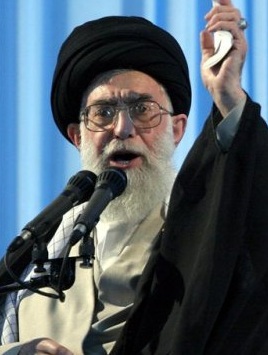
Ayatollah Sayyid Ali Hosseini Khamenei
Born: 1939
Hometown: Mashhad
Position: Supreme Leader
“If street protests don’t stop, there will be other consequences … They will be held accountable for all the violence and blood and rioting … There will be a reaction.”
Ayatollah Ali Khamenei was born into a family of religious scholars in Mashhad, and attended seminary in that city under the direction of his father until the age of 18. He subsequently moved to Qom to continue his studies under ‘Allama Tabataba’i, Ayatollah Boroujerdi, and Ayatollah Khomeini. In 1962, he joined Khomeini’s movement, in which he played an active part.
Following the 1979 revolution, Ayatollah Khamenei joined the Islamic Revolutionary Council and the Islamic Republican party. He subsequently served as Minister of Defense and later President of Iran from 1982-1990. He was chosen to succeed Ayatollah Khomeini as Supreme Leader in 1990.
As Supreme Leader, Khamenei controls the military, including the Revolutionary Guards, and is responsible for resolving difficulties between the three branches of government. In his Friday sermon following the disputed June 12, 2009 elections, he stated that further demonstrations would not be tolerated. This was widely seen as a “green-light” to the military and paramilitary organizations, including the Basij militias, to violently crack-down on protesters.
Mohammad Ali Jafari
Born: 1957
Hometown: Yazd
Position: Commander, Revolutionary Guards
Forgiving the rioters, particularly the Ashura day rioters, is not practical, and even if some officials want to forgive them, people will not allow them.”
Mohammad Ali Jafari attended Tehran University before serving in the Basij militia and then the Revolutionary Guards during the Iran-Iraq War. From 1991 or 1992 through 2005, Jafari was commander of the Revolutionary Guards’ land forces.
Following the July 1999 uprisings at Tehran University, Jafari wrote a letter to then-President Khatami, warning him against pursuing further reformist policies, stating that “our patience is at an end, and we do not think it is possible to tolerate any more.”
In 2007, Supreme Leader Ayatollah Khamenei appointed him overall commander of the Revolutionary Guards, a branch of the military reporting directly to the Supreme Leader and highly influential both politically and economically. One of Jafari’s first moves was to decentralize the Guards’ command structure, creating 31 local command centers, and merging the Basij militia into the command structure of the Guards, all to deal with the “internal enemy” which he felt was a greater threat than the “external enemy.”
In late summer 2009, he boasted that the role of the Basij in the post-election events was decisive. He also argued that the detainees who confessed to having collaborated with the enemy did so freely because, in prison, they were free of pressures from their affiliated parties and societies.
Ayatollah Sadeq Ardeshir Larijani
Born: 1960
Hometown: Najaf, Iraq
Position: Guardian Council member and Head of the Judiciary
“Of course some offences were committed when [police tried to quell] the post-election unrest and some offences that took place in detention centers tarnished the image of the state.”
Ayatollah Sadeq Ardeshir Larijani is the brother of Majlis Speaker (and former nuclear negotiator), Ali Larijani as well as the head of the human-rights council, Mohammad Javad Larijani.
Larijani was chosen by Ayatollah Khamenei to replace Mahmoud Hashemi Shahroudi as head of the Judiciary in mid-August 2009, relinquishing his seat on the Guardian Council. In his current position, Larijani appoints the Chief Justice, the Prosecutor-General of Iran and judges, and proposes judicial legislation. Despite the fact that the head of the Judiciary is required to be a mojtahed (competent to derive new law from traditional sources) with significant experience, Larijani was only a middle-ranking cleric until a few months before his appointment.
Shortly after his appointment, Larijani moved Saeed Mortazavi, who was found responsible for the deaths of three protesters held at Kahrizak prison in July 2009 by a Majlis committee, from his position as Tehran’s Prosecutor General, to the be one of six deputies to the Prosecutor-General of Iran.
Before becoming head of the Judiciary, he was known primarily for being the youngest member of the Guardian Council, which is charged with interpreting the Constitution, supervising elections, and approving law and candidates in conformity with Islam. He is also known for his criticism of former-president Muhammad Khatami and Abdol Karim Soroush.
Larijani has said that any doubts about the June 12, 2009 election are “baseless” and that the protests which followed were “illegal.”
President Mahmoud Ahmedinajad
Born: 1956
Hometown: Garmsar, Semnan
Position: President of the Islamic Republic
“Now… dirt or dust creeping from the corners may do something. But you must know that the pure river that is the Iranian nation will not allow them to put themselves on display.”
Hailing from a poor background, Mahmud Ahmedinajad studied at the Iran University of Science and Technology in Tehran before serving in a number of administrative posts in West Azerbaijan. He subsequently joined the faculty at his alma mater before being appointed mayor of Tehran in 2003. Two years later, he won the presidential election, beating Akbar Hashemi Rafsanjani. As President, he is head of the executive, carrying out domestic and international policy though ultimately subordinate to the Supreme Leader.
Ahmedinajad has been criticized extensively both in Iran and abroad for the general degradation of human rights under his watch. Following the June 12, 2009 election, Ahmedinajad declared his victory quickly and called those who protested against the results sore losers and “dust and dirt.” He rarely speaks about the disputed election, but when he does, he blames foreign intervention in Iran’s domestic politics.
Saeed Mortazavi
Born: 1967
Hometown: Yazd
Position: Prosecutor-General of Tehran and Deputy Prosecutor-General of Iran
“Special judges… spared no efforts, at this time of sedition and conspiracy by muharibs and enemies of the sacred system of the Islamic Republic, to foil these riots.”
Known as the “Butcher of the Press,” Saeed Mortazavi served as a judge before becoming Prosecutor-General of Tehran in 2003. In that capacity he was charged with investigating crimes against the state. He is widely believed to have been responsible for the 2003 death of Zahra Kazemi, an Iranian-Canadian journalist who was arrested while taking photographs near Evin Prison. He has also threatened family members of detainees to induce prisoners to write false accounts of pleasant conditions while in custody.
Activists jailed after the June 12, 2009 election report that their arrest warrants were signed by Mortazavi two days before the election. He also personally intervened to prevent the release of Somayyeh Tohidloo, an activist who was arrested without a warrant or explanation.
In December 2009, a report of an investigation ordered by the Majlis was released, finding Mortazavi primarily responsible for the deaths of three protesters and the maltreatment of over 100 others at the Kahrizak prison. In July 2009, 147 people were held for four days in Kahrizak, in a 70m2 room without proper ventilation, heating or food.
On August 31, 2009, Mortazavi was appointed Deputy Prosecutor of Iran. Since then, fifty-seven MPs have called for his dismissal and prosecution. In January 2010, Ahmedinajad appointed Mortazavi to head Iran’s Task Force Against Smuggling, ignoring widespread criticism of his decision.
Abbas Jafari-Dolatabadi
Born: 1953
Hometown: Yazd
Position: Prosecutor-General of Tehran
“I would like to advise the public to be wary of deviating slogans and of those individuals who seek to disrupt public order on this day. I urge security officers to confront those persons who seek to undermine social security.”
As head of the Judiciary in Khuzestan Province, Abbas Jafari-Dolatabadi promised “severe punishment” of leaders of the opposition and those who protested following the June 12, 2009 election.
He replaced Saeed Mortazavi as Prosecutor-General of Tehran in September 2009. He issued arrest war- rants for political figures including Alireza Beheshti, Mousavi’s head advisor, and ordered that Mehdi Karroubi’s office and the office of the Society for the Defense of Political Prisoners be sealed. In October 2009, he announced that a case had been opened in the Special Court for the Clerics to investigate Karroubi for making accusations of sexual assault in detention centers.
Dolatabadi also falsely claimed that Dr. Pourandarjani, a physician at Kahrizak prison who reported that suspects in custody had died from beatings and who subsequently died under mysterious circumstances himself, had committed suicide by mixing heart and blood-pressure medications into his salad.
Hojjatoleslam Hossein Taeb
Born: 1963/4
Hometown: Tehran
Position: Head of Basij and Head of the Revolutionary Guard Intelligence Unit.
“If Hashemi Rafsanjani, Khatami and Mousavi were arrested, there would be no consequences in the country.”
Hojjatoleslam Hossein Taeb studied religious sciences under now-Ayatollah Khamenei. He joined the Revolutionary Guards in 1982 or 1983 and acted as the organization’s coordinator with the office of the Supreme Leader. Khamenei appointed him as head of the Basij on July 13, 2008. The Basij is a militia of private citizens purportedly established to provide domestic security under the command of the Revolutionary Guards. Members are often deployed to counter student demonstrations, enforce Islamic dress codes, and maintain the separation of the sexes.
Thousands of Basij members were used to quash the demonstrations following the June 12, 2009 elections. They were reportedly linked to the beatings and murders of demonstrators, home invasions, destruction of property, and rape.
Taeb has insisted that the Basij were not authorized to carry weapons during the demonstrations, despite witness testimony and video footage showing otherwise. Taeb claimed that police arrested armed imposters who wore Basij uniforms.
Mohammad Reza Naqdi
Born: 1953
Hometown: Najaf, Iraq
Position: Deputy Director of Intelligence, Quds Force of the Revolutionary Guards and Head of Basij
“Those groups that chant slogans against the revolution’s values … should know that they will be confronted by Basij.”
Known as the “Tyrant of the Campus,” Mohammad Reza Naqdi was born in Najaf, Iraq but moved to Iran following the revolution in 1979. In 1993, he became Deputy Director for intelligence of the “Quds Force,” a branch of the Revolutionary Guards tasked with exporting the Islamic Revolution. During 1997 and 1998, Naqdi was allegedly involved in the imprisonment and torture of Tehran mayor Qolam-Hossein Karbaschi as well as other prominent city officials. He is reported to be a “key figure” in the organization and financing of Ansar-i-Hezbollah, a group that was involved in the 1999 attacks on students at Tehran University.
Journalist and former Basiji, Amir Farshad Ebrahimi, claims that Naqdi was present during torture of protesters at Kahrizak prison in the summer of 2009. On January 5, 2010, Naqdi told the hard-line daily Kayhan “[a]nyone who objects to this [Islamic] revolution or the rule of the Just Jurisprudent is making futile efforts to bring the establishment to its knees. These people are either morally or financially corrupt or are drug addicts, and it is rare to find someone who has objections [to the establishment and the Supreme Leader] to have a healthy personal life.” He has blamed the demonstrations following the June 12, 2009 election on the United States.
Hojjatoleslam Qolam-Hossein Mohseni-Ejei
Born: c. 1956
Hometown: Ejiyeh
Position: Minister of Intelligence and Prosecutor-General of Iran
“The Islamic Republic of Iran will counter any move aimed at creating disorder in the system without hesitation.”
Hojjatoleslam Qolam-Hossein Mohseni-Ejei was a student in the Haqqani School in Qom, and reportedly holds a master’s degree in international law. He was the judge in the trial of former Tehran mayor Qolam-Hossein Karbaschi. Considered to hail from the hard-line school of Muhammad Taqi Mesbah-Yazdi, Ejei insisted that the British Embassy in Tehran sent agents provocateurs among the crowds of protesters following the June 12, 2009 election.
In July 2009, he lost his position in the Ministry of Intelligence, reportedly due to political in-fighting following the election. One month later, he was appointed by Judiciary Head Sadeq Larijani to be Prosecutor-General of Iran, where he is now responsible for investigating crimes against the state. He has encouraged “tough action” against further protests, and “crushing responses” to illegal rallies. During the Ashura protests in December 2009, Ejei stated that the foreigners who were arrested would be prosecuted as muharibih (enemies of God) and promptly executed.
Hojjatoleslam Heydar Moslehi
Born: 1956
Hometown: Isfahan
Position: Minister of Intelligence
“This unrest is different from that of the past and is a prearranged counter-revolutionary movement, designed by agents of sedition.”
Hojjatoleslam Heydar Moslehi was Supreme Leader Khamenei’s representative to the Basij militia and head of the Organization of Islamic Trusts and Charities. He was appointed Ahmedinajad’s advisor for clerical affairs in 2005, but was forced to step down because of his connection to the Basij. It has been reported that he was chosen to take over the Ministry of Intelligence in August 2009 after former Intelligence Minister Qolam-Hussain Mohseni-Ejei denied a link between the demonstrations in the wake of the June 12, 2009 and plans for a “velvet revolution.”
Moslehi has blamed “several foreign nationals” for “pursuing propaganda and psychological warfare” during the demonstrations.” He has reportedly identified 80 organizations responsible for the demonstrations, which he claims had been planned ahead of time in Berlin and Denmark in order to “alter the behavior of government officials and the people” as well as dismantle the Islamic Republic regime from within, including “[the] People’s Mojahedin Organization, monarchists, religious and ethnic terrorists, Baha’is, homosexuals, feminist groups, nationalists and Marxists.”
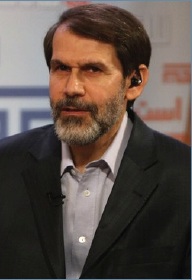
Sadeq Mahsouli
Born: 1959
Hometown: Orumieh
Position: Minister of the Interior and Minister of Labor
“Many of the rioters were in contact with America, CIA and the MKO and are being fed by their financial resources.”
Known as the “Billionaire General” for using his contacts in the Revolutionary Guards to build a construction and oil-trading fortune, Sadeq Mahsouli was nominated to be Minister of Oil in November 2008 before his wealth and lack of experience forced a different choice. His nomination for Interior minister was only narrowly approved by the Majlis as he had been Ahmedinajad’s campaign manager and would be in charge of overseeing future elections as Interior Minister.
His announcement that Ahmedinajad had won 24 million votes, more than anyone in the country’s history, sparked allegations of vote-rigging and massive protests following the June 12, 2009 election. As Minister of the Interior, Mahsouli was responsible for counting votes, the police action against protesters, as well as the denial of permits for opposition rallies. On June 17, 2009, conservative Speaker of the Majlis Ali Larijani blamed Mahsouli for attacks on civilians and students, stating “[t]he Interior Minister is responsible and should be accountable for the events.”
Mostafa Mohammad Najjar
Born: 1956
Hometown: Tehran
Position: Minister of Defense and Minister of the Interior
“After Ashura, anyone who takes part in riots will be considered as muharib [waging war on God] and an opponent of national security.”
Mostafa Mohammad Najjar reportedly joined the Revolutionary Guards in 1979 and took part in quelling Kurdish unrest in 1979 and 1980. Najjar became head of the Middle East directorate in 1982, overseeing forces in Lebanon. He has also overseen defense-manufacturing companies, and has been linked by the European Union to the proliferation of nuclear technologies.
According to a leaked memo, Najjar estimated the number of protesters following the June 12, 2009 election at 350,000. On November 10, 2009, Supreme Leader Khamenei appointed Najjar Deputy Commander of Armed Forces in charge of Police Forces in order to “ensure order and security.” He was in charge of the government response to protests on Ashura, the holiest day of the year for Shi’a Islam. State media reported 37 dead, and hundreds arrested.
On January 3, 2010, Najjar told reporters “the rioters are encouraged and supported by Britain, the US and the Zionist regime [Israel]. The involvement of the Mojahedin-i Khalq Organization (MKO), enemies and those who seek to take revenge on the Islamic establishment during the past 30 years is quite clear.”
On May 4, 2010, the representative for the largely Kurdish district of Sanandaj in the Majlis, Amin Shaabani, announced that he was collecting signatures to impeach Najjar. He stated that “the militarization of the Interior Ministry, the appointment of military men to key posts, disorder in the councils and not considering competence in appointing managers are among the reasons for Najjar’s impeachment.”

Esmail Ahmadi-Moqaddam
Born: 1961
Hometown: Tehran
Position: Chief, National Police
“The police have details about the activities of these people who tried to question the legitimacy of the election and expose fraud with the help of Western media and their embassies.”
During the demonstrations following the June 12, 2009 election, Esmail Ahmadi-Moqaddam promised to “quell any unrest” and mobilized thousands of police officers. On July 1, 2009, he claimed that Dr. Arash Hejazi, who was present during the shooting of Neda Agha-Sultan, was wanted by Interpol for aiding Western media in “psychological warfare against Iran.” He later claimed to have been misquoted.
Ahmadi-Moqaddam initially claimed that only the most dangerous suspects were taken to Kahrizak prison, but later admitted that at least 145 of the prisoners were low-priority and not dangerous. A doctor working in the prison, Dr. Ramin Pourandajarani, found that the death of one suspect was the result of conditions in the prison and beatings. The doctor subsequently died under mysterious circumstances while in police headquarters.
During protests on Ashura (December 27, 2009), witnesses saw and at least one video shows protesters being run over by a police vehicle. Ahmadi-Moqaddam claimed that the vehicle was stolen and that the thief was responsible for this attack.
Azizollah Rajabzadeh
Position: Chief of Police, Tehran
“After the election when illegal gatherings and rallies were held, police officers acted with profound insight and measured force … when there was need for exerting force they did so, and when there was need to show restraint they did that as well.”
Azizollah Rajabzadeh became Chief of Police for the city of Tehran in October 2008. During the demonstrations following the June 12, 2009 presidential elections, police forces under his command were filmed assaulting the dormitories at Tehran University and beating students with batons. Other video shows a police vehicle running over protesters in the streets.
Rajabzadeh claimed that no one was abused or died in Kahrizak prison, despite the fact that a Majlis investigation concluded that three young men died as the result of maltreatment while in custody in the prison. He was later honored with a certificate of praise by the Majlis for “putting out the flame of rebellion.”
On February 22, 2010, he was replaced by Hossein Sajedinia, formerly deputy chief of police for police operations.
Ahmad-Reza Radan
Born: 1963
Hometown: Isfahan
Position: Deputy Chief, National Police
“[The Police] will act with determination against all illegal demonstrations and protests.”
Brigadier General Ahmad-Reza Radan began a career in law enforcement during the reign of the Shah. Following the 1979 revolution, he served as an infantry commander during the Iraq-Iran war before returning to the police force.
He is known in Iran for his crackdown on “un-Islamic” hair and dress, especially for filming alleged perpetrators being beaten and or forced to do humiliating acts.
Several individuals who were taken to Kahrizak prison after protests following the June 12, 2009 election claimed that Radan was personally involved in their torture. Radan has warned that “in the interrogation of related rebels, we intend to find the link between the plotters and foreign media.”
Hossein Shariatmadari
Position: Managing Editor, Kayhan newspaper
Hossein Shariatmadari is the appointed representative of Supreme Leader Khamenei to the Kayhan Institute, a large and influential publishing group. He is also Managing Editor of its hard-line conservative daily newspaper, Kayhan. Shariatmadari is a strong supporter of President Mahmoud Ahmadinejad and is reported to have links with the intelligence services. On February 12, 2009, he wrote an article in Kayhan suggesting that former president Khatami might be assassinated if he ran against Ahmadinejad.
On June 28, 2009, he wrote an editorial claiming that opposition candidate Mir-Hossein Mousavi was trying to “escape punishment for murdering innocent people, holding riots, cooperating with foreigners and acting as America’s fifth column inside the country.” He called for Mousavi and Khatami to be tried for “horrible crimes and treason.”
On August 21, 2009, Mousavi’s aide Ali Reza Beheshti filed suit against Kayhan alleging that a story in the paper suggested Mousavi had a lawmaker assassinated before he could issue a report on Mr. Mousavi. Shariatmadari was ordered to court twice to represent the newspaper but did not appear, prompting Judge Mansouri to order the paper closed. However, the Prosecutor-General of Tehran, Saeed Mortazavi, denied that any such order had been issued.
Ayatollah Ahmad Khatami
Born: 1960
Hometown: Semnan
Position: Interim Friday Prayer Leader, Tehran
“Anybody who fights against the Islamic system or the leader of Islamic society, fight him until complete destruction.”
Ayatollah Ahmad Khatami (no relation to former president Mohammad Khatami) was appointed to be an interim Friday Prayer Leader by Supreme Leader Ayatollah Khamenei on December 18, 2005, an important political and clerical post. Friday Prayer serves as a show of force against enemies and to unify Muslims. The Friday Prayer sermon (khutbih) is considered to be part of the prayer and is delivered by the Friday Payer Imam who must be a brave, intelligent, able and eloquent man.
Khatami is also a member of the Assembly of Experts, which selects and oversees the Supreme Leader. In June 2007, he stated that the fatwa by Ayatollah Khomeini calling for the death of Salman Rushdie following publication of his book, The Satanic Verses, was “still alive.”
In his August 14, 2009 sermon, Khatami claimed that young people were duped into protesting by satellite television channels and internet websites. In July 2009, he also called for a befitting response to Mehdi Karroubi’s request for an investigation into allegations of sexual abuse at the Kahrizak prison.
Ayatollah Ahmad Jannati
Born: 1927
Hometown: Isfahan
Position: Chairman, Guardian Council and Interim Friday Prayer Leader, Tehran
“I know you well, judiciary officials! For God’s sake, stand firm as you already did with your quick execution of these two convicts.”
Ayatollah Ahmad Jannati is the Chairman of the Guardian Council, which is responsible for interpreting the Constitution, supervising elections, and ensuring that laws and government officials are in conformity with Islam. The Guardian Council has refused to ratify the Convention against Torture and other Cruel, Inhuman or Degrading Treatment or Punishment despite measures for ratification having twice passed the Majlis.
According to Ali Motahhari, a conservative member of the Majlis, Ayatollah Jannati’s favoritism toward Mahmoud Ahmedinajad made him unqualified to judge and verify the results of the June 12, 2009 election.
Jannati called for the trial of British embassy staff for fomenting riots after the election; one staff-member of the Embassy, Hossein Rassam, was sentenced to four years. Jannati also called upon Judiciary head Sadeq Larijani to speed up the executions of protesters.

